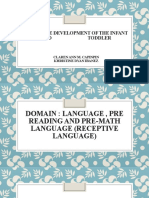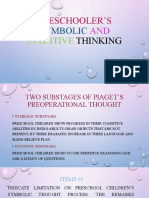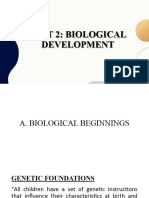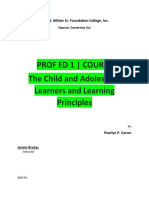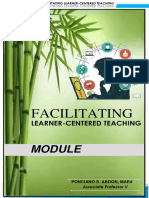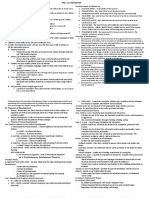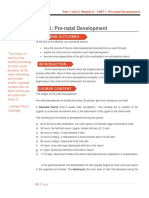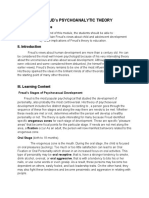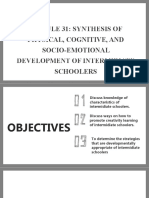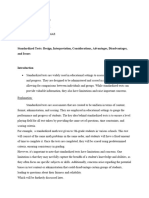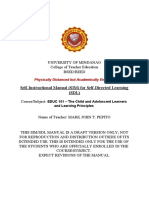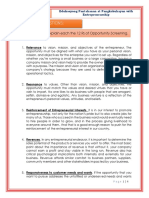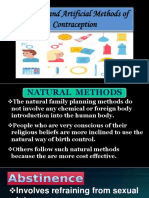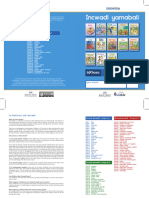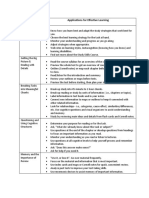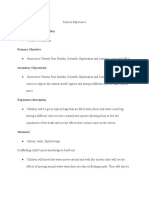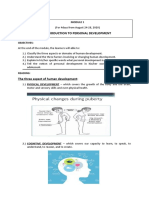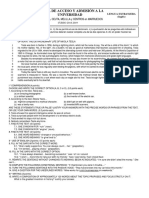0% found this document useful (0 votes)
559 views15 pagesModule 15 Profed03
Preschoolers experience significant physical development between toddlerhood and the beginning of formal schooling. Their center of gravity lowers, and their "baby teeth" are fully developed by age 3. Gross motor skills like running and jumping emerge, along with developing fine motor abilities to hold a pencil and use scissors. Artistic development progresses from scribbling to recognizable drawings according to Viktor Lowenfeld's stages of drawing in early childhood. Preschoolers' nutrition and 10-12 hours per night of sleep are also important for healthy development during these years.
Uploaded by
elynCopyright
© © All Rights Reserved
We take content rights seriously. If you suspect this is your content, claim it here.
Available Formats
Download as PPT, PDF, TXT or read online on Scribd
0% found this document useful (0 votes)
559 views15 pagesModule 15 Profed03
Preschoolers experience significant physical development between toddlerhood and the beginning of formal schooling. Their center of gravity lowers, and their "baby teeth" are fully developed by age 3. Gross motor skills like running and jumping emerge, along with developing fine motor abilities to hold a pencil and use scissors. Artistic development progresses from scribbling to recognizable drawings according to Viktor Lowenfeld's stages of drawing in early childhood. Preschoolers' nutrition and 10-12 hours per night of sleep are also important for healthy development during these years.
Uploaded by
elynCopyright
© © All Rights Reserved
We take content rights seriously. If you suspect this is your content, claim it here.
Available Formats
Download as PPT, PDF, TXT or read online on Scribd
/ 15


